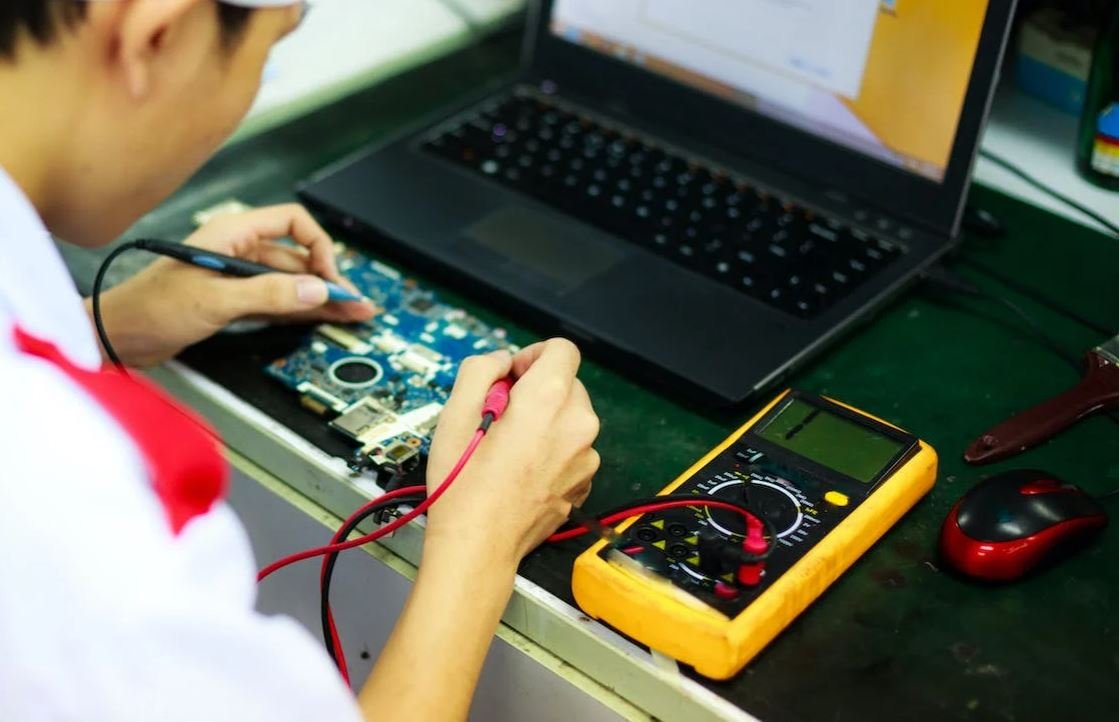Deepfake AI History
Deepfake technology, driven by artificial intelligence (AI), has rapidly evolved over the years, revolutionizing the creation of synthetic media. Deepfakes refer to manipulated audio, images, or videos that seamlessly blend one person’s likeness with another’s, creating realistic but fake content. Let’s delve into the history of deepfake AI and understand its implications.
Key Takeaways
- Deepfake AI technology has rapidly advanced, enabling the creation of highly realistic fake media.
- Deepfakes pose significant challenges related to misinformation, privacy, and trust.
- Regulation and detection methods are being developed to combat the negative impact of deepfakes.
Birth of Deepfake AI
The origins of deepfake AI can be traced back to 2014 when a Reddit user with the pseudonym “deepfakes” popularized the method of using deep learning algorithms to replace faces in adult videos. This marked the beginning of the deepfake phenomenon.
Deepfake AI emerged from internet communities, showcasing the ingenuity of online users.
Initially, the deepfake technology relied heavily on generative adversarial networks (GANs), a type of machine learning architecture that involves a dual neural network setup comprising a generator and a discriminator.
Deepfake AI Breakthroughs
Since deepfakes gained public attention, significant breakthroughs have shaped their development. These advancements have improved the quality and believability of deepfake media:
- Introduction of autoencoders: By leveraging autoencoders, deepfake algorithms can better capture and reproduce facial details, resulting in more realistic impersonations.
- Improvements in facial landmark detection: Precise detection of facial landmarks allows for accurate mapping and seamless blending of facial features.
Deepfake AI breakthroughs have led to the creation of hyperrealistic and convincing fake media.
Deepfakes Gone Mainstream
Over time, deepfake AI gained significant attention beyond just online forums. Notable instances of deepfakes going mainstream include:
- Deepfake videos featuring influential personalities and politicians, raising concerns about their potential misuse in spreading misinformation and manipulating public opinion.
- Applications in the entertainment industry, with deepfake technology used to resurrect deceased actors in movies or create compelling visual effects.
Deepfake AI has become a prominent topic of discussion, highlighting its potential impact on various domains.
The Deepfake Arms Race
As deepfake technology evolves, its potential negative consequences become increasingly evident. This has led to the development of countermeasures:
- Government and tech industry collaborations: Public and private partnerships aim to detect and combat deepfakes by funding research and developing advanced detection tools.
- Policy and regulations: Governments worldwide are exploring legal frameworks to address the challenges posed by deepfakes and mitigate their potential harm.
Efforts to combat deepfakes intensify as stakeholders recognize the urgent need to address the associated risks.
Deepfake AI Future
The future of deepfake AI remains uncertain. While it offers intriguing possibilities in fields like entertainment and virtual experiences, it also raises concerns about privacy, trustworthiness, and the spread of disinformation. Taking a comprehensive approach involving technology, policy, and education is crucial to navigate the future of deepfake AI responsibly.
Tables:
| Breakthrough | Impact |
|---|---|
| Introduction of autoencoders | Enhanced realism and finer detail reproduction in deepfakes |
| Improvements in facial landmark detection | Better mapping and integration of facial features |
| Domain | Examples |
|---|---|
| Politics | Manipulative speech synthesis and fake political endorsements |
| Entertainment | Resurrection of deceased actors and special effects in movies |
| Countermeasure | Goal |
|---|---|
| Government and tech industry collaborations | Funding research and developing advanced detection tools |
| Policy and regulations | Addressing challenges and mitigating potential harm through legal frameworks |
The Road Ahead
As societal awareness and understanding of deepfake AI continues to grow, it is essential to stay updated with advancements, security measures, and the ongoing efforts to combat potential misuse. Vigilance and a well-rounded approach are key to navigating the deepfake landscape responsibly.

Common Misconceptions
1. Deepfake AI is a recent phenomenon
Despite the recent surge in popularity, deepfake AI technology is not a new concept. In fact, it has been around for several decades, with its origins dating back to the early 1990s. However, advancements in machine learning and artificial intelligence algorithms have significantly improved the quality and accessibility of deepfake creation in recent years.
- Deepfake AI has been in development since the 1990s
- Advancements in machine learning have made deepfake creation easier
- Popularity and prevalence of deepfakes have increased in recent years
2. Deepfake AI is only used for malicious purposes
While it is true that deepfake technology can be exploited for deceptive or harmful purposes, it is essential to recognize that its applications are not limited to malicious intent. In fact, deepfake AI has found uses in various fields like entertainment, education, and even healthcare. Deepfake technology can be utilized for creating realistic simulations, improving virtual training environments, and aiding medical professionals in diagnosing illnesses.
- Deepfake technology can be beneficial in certain industries
- Entertainment and education can benefit from deepfake AI
- Deepfakes can assist healthcare professionals in medical diagnosis
3. Deepfake AI can perfectly replicate any individual
Contrary to popular belief, deepfake AI technology cannot produce perfect replicas of individuals. While it is true that deepfake algorithms have become increasingly advanced in mimicking facial features and expressions, they still have limitations. Certain factors, such as lighting conditions, angle, and the availability of high-quality training data, can affect the accuracy and quality of deepfakes.
- Deepfake technology has limitations in accuracy
- Factors like lighting and angle can affect the quality of deepfakes
- Availability of high-quality training data is crucial for accurate results
4. Deepfake AI can only manipulate videos
While videos are the most common medium for deepfake manipulation, deepfake AI can also manipulate other forms of media, such as audio and images. With the advancement of technology, it is now possible to create deepfake voices and alter images realistically. This flexibility allows for a wider range of potential applications beyond video manipulation.
- Deepfake AI can manipulate audio in addition to videos
- Alteration of images is also possible using deepfake technology
- Deepfake AI offers a range of potential applications across different media
5. Deepfake AI is impossible to detect
Although deepfake AI technology continues to improve, there are ways to detect deepfake content. Researchers and developers are actively working on developing algorithms and tools to identify manipulated media. By analyzing inconsistencies in facial movements, unnatural body language, or using advanced forensic techniques, experts can often distinguish genuine content from deepfake creations.
- Detection methods for deepfake AI are being developed
- Inconsistencies in facial movements can reveal deepfake content
- Advanced forensic techniques can help identify manipulated media

The Beginnings of AI
Before diving into the history of deepfake AI, it’s important to understand the origins of artificial intelligence itself. The concept of AI emerged in the 1950s, when researchers began exploring ways to create machines capable of simulating human intelligence. The following table depicts some key milestones in the early development of AI:
Deepfake: The Evolution
Deepfake technology has rapidly evolved over the past decade, employing advanced machine learning algorithms to create extremely realistic and believable fake videos. The following table highlights notable moments in the history of deepfake AI:
Impact of Deepfake on Society
The rise of deepfake AI technology has presented numerous challenges and potential consequences for society. The following table outlines the various impacts of deepfake on different facets of our lives:
Deepfake in Entertainment
The entertainment industry has been heavily impacted by the emergence of deepfake AI, allowing for new possibilities in film and media production. The following table showcases examples of deepfake usage in the realm of entertainment:
Implications for Journalism
Deepfake AI introduces significant concerns regarding the authenticity and trustworthiness of information, particularly in journalism. The table below explores the implications of deepfake technology for this field:
Spread of Misinformation
Deepfake AI’s ability to create convincing fake videos has raised concerns about the spread of misinformation and fake news. The table below demonstrates the potential impact of deepfake on the spread of misinformation:
Legal and Ethical Considerations
The development and utilization of deepfake AI raise various legal and ethical questions that need to be addressed. The following table highlights some of these considerations:
Battling Deepfake: Countermeasures
As the threat of deepfake grows, researchers and companies are actively developing countermeasures to detect and mitigate the harmful effects of fake videos. The table below illustrates some strategies employed to combat deepfake AI:
The Future of Deepfake AI
With advancements in AI technology, the future of deepfake remains uncertain. The potential implications and advancements in the field are explored in the following table:
Implications for Privacy
The development of deepfake AI raises significant concerns regarding privacy, as individuals can easily be targeted and manipulated. The table below presents some of the privacy implications associated with deepfake:
Deepfake AI has rapidly advanced, posing numerous challenges and potential consequences for society. From its beginnings in artificial intelligence research to its impacts on entertainment, journalism, misinformation, and privacy, deepfake technology continues to evolve at an alarming rate. As we move forward, it is crucial to prioritize discussions around the legal, ethical, and social implications of this technology in order to navigate its potential risks and benefits.
Frequently Asked Questions
What is a deepfake?
A deepfake refers to a technique using artificial intelligence (AI) algorithms to create convincing fake videos or images by superimposing someone’s face onto another person’s body or altering their appearance and voice.
When was deepfake AI first developed?
Deepfake AI technology emerged in the late 2010s, with the first notable deepfake published in 2017. However, the concept of manipulating visual and audio content has been explored in various forms for decades.
How does deepfake AI work?
Deepfake AI algorithms use neural networks, specifically generative adversarial networks (GANs), to analyze and synthesize large amounts of data. By training on existing images or videos of a target person, the AI learns to mimic their appearance and expressions, allowing it to generate realistic deepfake content.
What are the potential uses of deepfake AI?
While deepfake AI has raised concerns due to its potential for abuse, it also has various positive applications. It can be used for entertainment purposes, such as in movies or advertising, as well as in fields like computer graphics and virtual reality.
Are there any ethical concerns associated with deepfake AI?
Yes, deepfake AI presents several ethical concerns. Its misuse can lead to the spread of misinformation, identity theft, and even blackmail. Deepfakes can also be used to manipulate public opinion, damage reputations, and breach privacy rights.
How can deepfake AI be distinguished from genuine content?
Detecting deepfake AI is a challenge, given its increasingly realistic results. However, there are ongoing research and development efforts to create tools and techniques for deepfake detection, such as analyzing inconsistencies in facial expressions, unnatural eye movements, or artifacts introduced during the manipulation process.
What measures are being taken to combat the negative effects of deepfake AI?
Various organizations, including technology companies and research institutions, are actively working on developing methods to detect and prevent deepfake AI. Policymakers and legal experts are also considering regulations to address the potential harms of deepfakes.
What are some notable incidents involving deepfake AI?
There have been several high-profile incidents involving deepfake AI, such as the creation of fake celebrity pornographic videos, political figures being misrepresented in fake speeches, and instances of impersonation for financial fraud or other malicious purposes.
Is it legal to create or share deepfake AI content?
The legality of creating and sharing deepfake AI content varies by jurisdiction. In some cases, it may be considered a violation of privacy, identity theft, or intellectual property laws. It is important to consult local laws and regulations regarding deepfakes.
What does the future hold for deepfake AI technology?
As deepfake AI technology continues to advance, it is expected to become even more sophisticated and harder to detect. However, efforts to counter the negative effects of deepfakes and educate the public about their existence and potential risks are also likely to increase.




